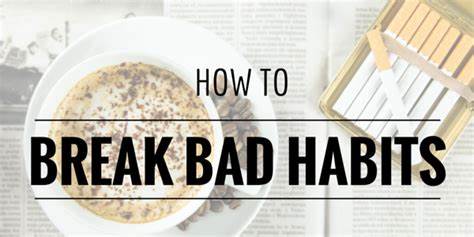How to Break Bad Habits
Imagine you are studying English. Perhaps you are learning new words or expressions. But then you feel the need to check your phone. Perhaps you look on social media.
You return to your studies, only to look again at your phone a short time later. This process, when repeated many times, could reduce your ability to learn new material. It is what you might call a bad habit – a custom or repeated action that has a negative effect on you or your goals.
Today, on Education Tips, we will explore how you can break bad habits, such as repeatedly checking your phone.
In an earlier Education Tips story, we explored habits. Habits are ways of dealing with issues in your environment. You often do not think about them.
In the earlier report, we discussed how habits are made. Now, a quick reminder for you. James Clear, in his book Atomic Habits, describes a four-step process by which habits are made. These steps are cue, craving, response, and reward.
A cue is a signal. It tells your brain to do something: to begin a behavior. A craving is a desire for something. The response, or reaction, is the habit that you perform. The response gives you a reward.
"Rewards are the end goal of every habit," Clear writes.
In our cell phone example, the cue is seeing the cell phone. The craving is the desire or urge to check your phone. The response is checking your phone. The reward might be seeing something interesting on social media, for example.
James Clear notes that to break bad habits, you need to think about each step in the habit-making process.
To break a habit, he writes, you should think about making the bad habit invisible, unattractive, difficult and unsatisfying.

To make your phone invisible, you could hide it away. To make it unattractive, you could think about why it is a good idea to stop checking the phone. To make phone use difficult, you can increase the space between you and your phone. To make your phone unsatisfying, you could make a habit contract. For example, you could ask a family member to watch your behavior and point out when you check your phone. You could promise to pay that person every time you look at the device while you are studying.
Wendy Wood is a psychologist and an expert on habits. In the book Good Habits, Bad Habits, she offers some ideas on how people can cut back on their cell phone use.
One suggestion is to wear a wristwatch. This will limit at least one reason for looking at the phone – checking the time.
Wood notes the importance of increasing the number of steps you need to take in order to use your cell phone.
"Silence it. Turn it off. Switch on your phone’s Do Not Disturb mode," she writes. She adds that you can move your phone to a place that is more difficult to reach. For example, you can put your phone inside a backpack.
Wood also suggests another way to think about cell phone use. She says you can add a new, healthy habit onto your cell phone habit. "What about if every time you check your phone, you call one member of your family just to say hello and have a quick … chat?" she asks.
Finally, Wood suggests one kind of reward you could give yourself for not looking at your phone: reading a good book.
Today, we discussed ideas for reducing your cell phone use. But you can use these ideas to break other behaviors.
The important thing to remember is that people can change their habits. But they must think carefully about their surroundings or environment. You might decide to stop doing an action, but if such an action is very easy for you to do, you will probably continue doing it.
Habit changes take time. But with patience, planning, and repetition, you can do it.
I’m John Russell.












